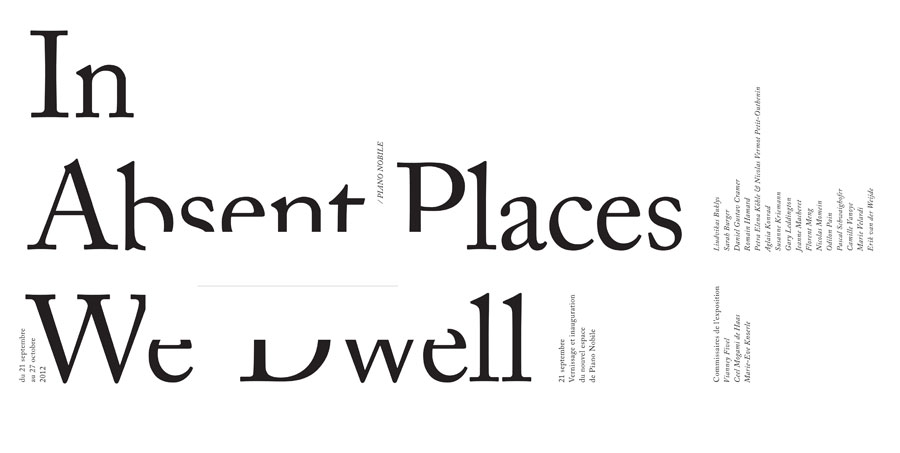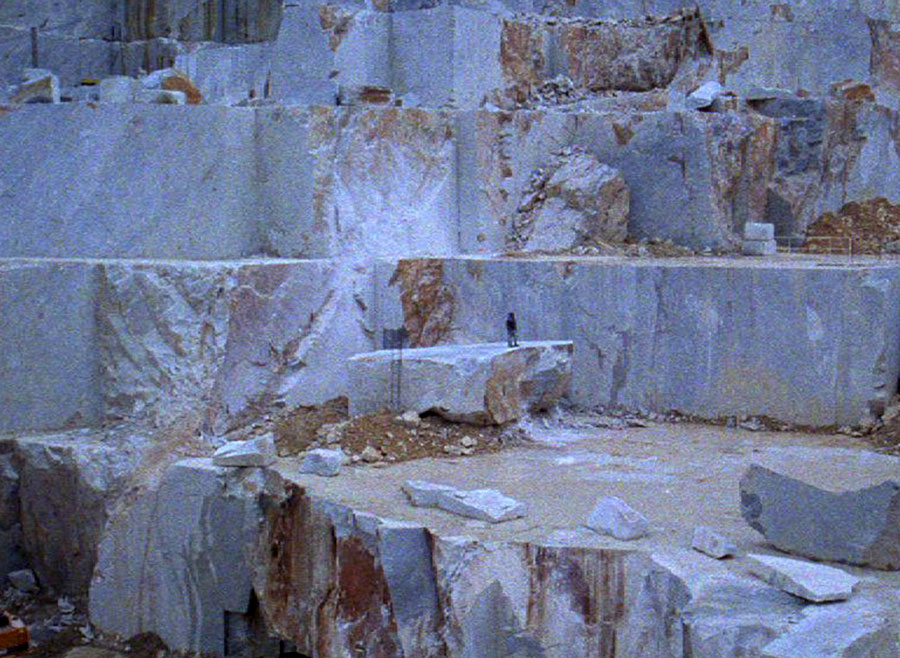Aglaia Konrad participe à l’exposition « In Absent Places, We Dwell », organisée par Vianney Fivel, Ceel Mogami de Haas, Marie-Eve Knoerle au Piano Nobile à Acacias-Genève. Exposition du 21 septembre au 27 octobre
Si l’on connaît la topographie comme méthode de description d’un lieu, l’atopographie, quant à elle, ne figure dans aucun manuel. Pourtant, nombre d’artistes aujourd’hui tentent de tracer les pourtours mouvants et changeants de l’espace contemporain: non-lieu, sans-lieu, hors-lieu, la notion d’atopie constitue déjà un paysage (sémantique) aux frontières modulables. Ce dernier s’explore à travers les œuvres des 16 artistes invités pour la première exposition dans le nouvel espace de Piano Nobile.
Les artistes invités : Liudvikas Buklys (LT), Sarah Burger (CH), Daniel Gustav Cramer (D) Romain Hamard (FR), Petra Elena Köhle & Nicolas Vermot Petit-Outhenin (CH), Aglaia Konrad (AT), Susanne Kriemann (D), Gary Leddington (GB), Jeanne Macheret (CH), Florent Meng (FR), Nicolas Momein (FR), Odilon Pain (FR), Pascal Schwaighofer (CH), Camille Vanoye (FR), Marie Velardi (CH), Erik van der Weijde (NL)
Aglaia Konrad a choisi de montrer « Concrete & Samples III », ce film réalisé dans les carrières de Carrare.
Rappelons ce qu’Angelika Stepken écrivait au sujet des photographies d’Aglaia Konrad à Carrare :
In the mid-1960s, the American artist Robert Smithson coined the phrase “nonsite” when he left the gallery spaces of the cities to look for places where the landscape did not appear as an exterior, scenic beauty, but rather as a destroyed, pulverized, dislocated space whose appearance and perspective provided no clear order. The gaze had revealed itself as an act, as a simulacrum. Smithson worked sculpturally in these “nonsites” and photographed them, according the photographs documentary and artistic value. In 1981, in his essay Sites/Non-Sites*, Lawrence Alloway wrote that Smithson equated geological change with the thinking process. Thus, landscape became analogous to human existence or at least its communication. In his writings and works, Smithson “recognized complexity and contradiction as a working condition.”
How is space organized, how is the gaze organized, the photographic image? Looking at Aglaia Konrad’s photographs, the eye does not become lost in a single motif, neither in the micro or in the macro view. It encounters the image, encounters itself in its exclusivity, its an-aesthetic. The gaze is not satisfied by seeing. It is called upon to create complexities out of fragments, to give meaning to profane crops, to “read” the image as structural information of the visible elements of time-space. Looking at Aglaia Konrad’s photographs does not become alleviated by the images’ motifs; the gaze requires a construction of meaning. Image production is image construction. Landscape is space formed or disfigured, used and exploited or removed over the course of centuries. Marble itself is a construction material; the marble quarries are deconstructed nature. In Carrara, landscape is workplace and architecture—an architecture of removal and not of building. The marble mountains of Carrara are a dusty, dispersed landscape, negative space and expanded space; they are both material body and missing part, and thus present themselves as incoherent.
Aglaia Konrad’s photographs of the marble quarries of Carrara are also dramatic, even when they do not follow a narrative, shun criticism, and refrain from a subjectivity of perspective—the result, apparently, of the camera’s disinterested lens. According to Aristoteles, the main characteristic of drama is the representation of an act through dialogue. The marble quarries of Carrara are a monumental space for action in which thousands of wordless dialogues are reflected and into which they continue to be inscribed. With time, this space expands as layers are continuously removed to reveal newer visibilities. The photographic act adds a presence to this complexity, while space itself becomes visible as an act and the gaze is no longer affected by the image.
[sociallinkz]

